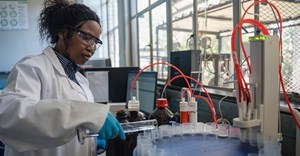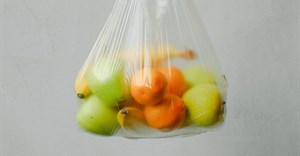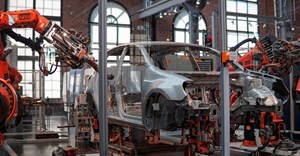
Subscribe & Follow
Changing behaviour to make recycling a way of life

With climate change set to make South Africa hotter and a growing population requiring increasing volumes of water, conserving and re-using this precious resource clearly needs to become part of our daily routine at home, work and play.
The same applies to other valuable resources that we simply throw away. The manufacturing of products ranging from packaging to containers, electronic devices, appliances and batteries consumes vast amounts of natural resources: much more water, millions of trees, countless barrels of oil and tonnes of coal and metals.
We throw packaging and containers together with organic waste into black bags which the municipality picks up and dumps in ever-growing landfills, incurring significant costs to ratepayers and creating environmental and health hazards in areas which could be more productively used for human settlement and urban agriculture.
National Pricing Strategy for Waste Management
Government’s recently released National Pricing Strategy for Waste Management (NPSWM) estimates that South Africa annually generates 108-million tonnes of waste, of which 90% is disposed of in municipal landfills. Diverting this waste from landfills and recycling it could generate up to R25.2bn a year for the economy, says the NPSWM.
Accurate, up-to-date statistics on the level of recycling are hard to come by, but a Council for Scientific and Industrial Research study conducted for the Department of Science and Technology estimates that by 2011 only 11% of waste diverted from landfill was recycled.
"Recycling figures vary for the different waste streams, from less than 20% for tyres, plastic and electrical and electronic equipment to in excess of 80% for metals and batteries,” says the NPSWM. “By international standards, certain waste streams generated in South Africa have achieved encouraging levels of recycling through voluntary programmes, while other waste streams are lagging behind that of other developed and developing countries.”
The NPSWM is a further move by government to support increased recycling. It proposes greater implementation of the extended producer responsibility (EPR) concept which is used internationally as an environmental protection strategy. EPR makes manufacturers responsible for the entire life cycle of their products, including supporting their post-consumer recovery and recycling.
Proactive industry support
To their enduring credit, a number of industry associations have long been pro-active by supporting extensive, voluntary EPR initiatives, such as those dealing with the paper, plastic, glass and metal can industries. However, these initiatives tend to focus on recovering, sorting and baling waste in preparation for reprocessing. The missing link in the chain is the consumer.
To increase recycling rates and divert high-value household waste from landfills over the longer term, greater focus on changing consumer and family behaviour is required. Education and awareness campaigns have been undertaken in the past by government, manufacturers and industry associations, though these have often been sporadic and uncoordinated.
Experience from a number of campaigns I’ve been involved in has taught me that education and awareness alone rarely lead to behaviour change. Convenience is also key. Separating out all ‘dry‘ recyclable items at home – plastic, paper, tins and glass – into a free bag which is placed on the kerbside for collection by the municipality once a week, every week works well and can become the social norm.
Behaviour change programmes
Effective behaviour change programmes sustained over the longer term go way beyond explaining the benefits of recycling and what items are recyclable. They also provide regular feedback to participants, such as how much is being recycled, what products are being made from waste, and what resource, energy and other savings are being achieved. They also make extensive use of local channels and media.
Interestingly, behaviour change programmes provide many touch points that household brands and retailers look for when deciding to sponsor or align with socially and environmentally responsible causes. These include:
- The brand’s product packaging is usually recyclable, so it’s an easy step to get involved in promoting their responsible recovery, recycling and re-use.
- Messaging materials offer targeted in-home brand exposure and stay visible in households.
- The company and brand is directly associated with environmental education and action, healthy neighbourhoods and natural resource conservation.
- Partnering such programmes supports expansion of the recycling industry, economic growth and job creation.
Brand, retailer opportunities
Faced with landfills having to cope with more and more waste and the prospect of substantial capital expenditure in establishing new sites, many municipalities are keen to introduce or extend recycling collections – especially those with a good chance of drawing substantial volumes out of the suburbs and back into the remanufacturing stream.
There are opportunities for brands and retailers to get involved in helping municipalities to raise recycling rates through effective behaviour change marketing and promotion. This is especially the case when they are starting out with separation-at-source kerbside collections, or if recovery rates are low and need a boost.
However, adequate budgets and specialist expertise are not always forthcoming. The right brands and their partners have a valuable role to play in helping make this happen.
About Hugh Tyrrell
Hugh Tyrrell is director of GreenEdge Communications, which works with government, non-profits and companies to raise participation in recycling programmes.
















